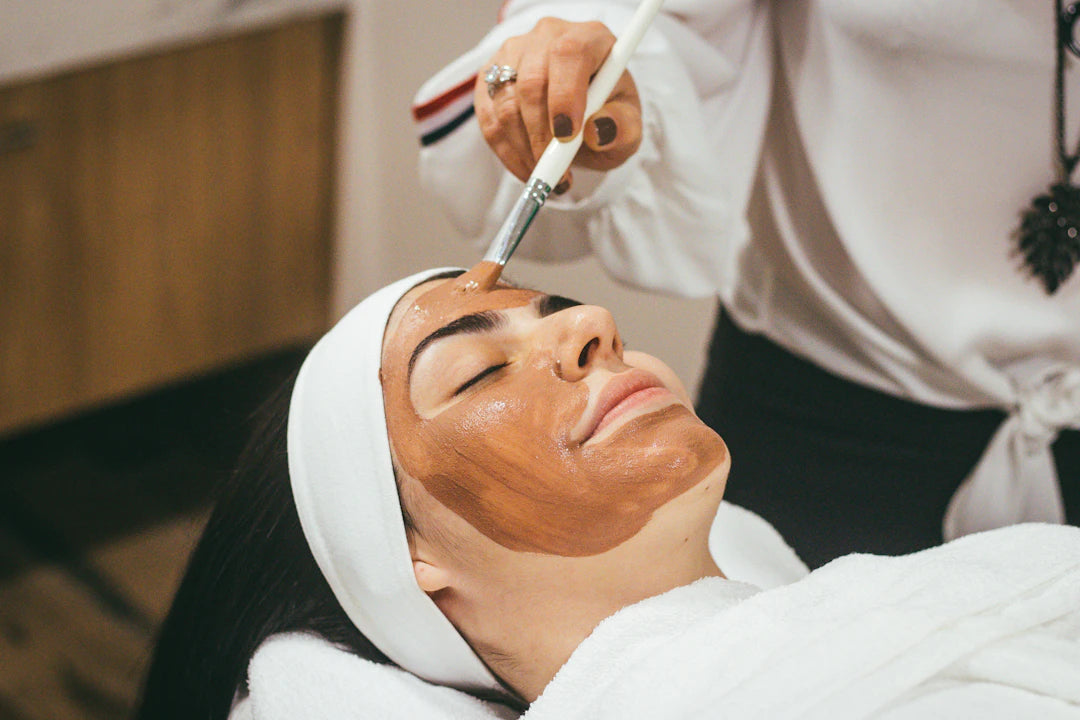Unlock Radiant Skin: The Science of pH in Skincare

Frequently Asked Questions
1. What is pH and why is it important for skincare?
2. How does pH affect skin hydration?
3. What is the acid mantle and its role in skin health?
4. How can I test my skin's pH?
5. What are some recommended steps to adjust my skin's pH?
In the world of skincare, understanding the role of pH can lead to the radiant, healthy skin you’ve always desired. The concept of pH may sound complex, but mastering this key element of skincare is easier than you might think. By knowing how pH affects your skin and the products you use, you can make informed choices that promote not just hydration but also skin tightening. Let’s dive into the specifics of pH levels and how they relate to effective skincare routines.
What is pH and Why Does It Matter?
pH stands for "potential of hydrogen," and it measures how acidic or alkaline a substance is on a scale of 0 to 14. A pH of 7 is neutral, below 7 is acidic, and above 7 is alkaline. Your skin has a natural pH level typically around 4.5 to 5.5, making it slightly acidic. This acidity helps protect the skin's barrier against harmful bacteria, pollutants, and other environmental aggressors.
When your skin’s pH level is improperly balanced, it can lead to a variety of skin issues, including dryness, irritation, and even conditions like acne or eczema. This is why understanding pH can significantly affect the effectiveness of your skincare routine, including the use of a hydrating skincare bundle aimed at achieving optimal moisture and balance.
The Acid Mantle: Your Skin's Protective Barrier
At the core of understanding your skin’s pH is comprehending the "acid mantle." This thin film of fatty acids, amino acids, and lactic acid helps maintain the skin's moisture levels while acting as a barrier against bacteria and irritants. A healthy acid mantle has the ideal pH to support skin health, and any disruption can affect its integrity.
The Importance of a Balanced pH
A balanced pH allows your skin to perform its natural functions efficiently. Here are some reasons why maintaining this balance is essential:
- Enhanced Hydration: Products designed for hydration work best when the skin’s pH is within the optimal range. Using a hydrating skincare bundle with the right pH can lock moisture into the skin, keeping it supple and fresh.
- Prevention of Skin Issues: An imbalanced pH can cause skin problems, including irritation and excessive oil production. Proper pH regulation helps prevent these issues from arising.
- Optimized Product Efficacy: Certain active ingredients need specific pH levels to work effectively. Understanding pH allows you to pair products properly for maximum results.
Common pH Levels in Skincare Ingredients
When choosing skincare products, it’s crucial to be aware of the pH levels of their ingredients. Here’s a brief overview of the pH levels of some common skincare ingredients:
- Water: 7 (neutral)
- Glycolic Acid: 3 (acidic)
- Salicylic Acid: 3 (acidic)
- Hyaluronic Acid: 4 to 6 (mildly acidic)
- Vitamin C (L-Ascorbic Acid): 2.5 to 3.5 (highly acidic)
Understanding these pH levels helps you select products that align with your skin's natural balance. For instance, if you're looking for hydration, a product with hyaluronic acid would be ideal, especially within a thoughtfully curated hydrating skincare bundle.
How pH Affects Your Skincare Routine
Your skincare routine is only as effective as the products you use, which are influenced significantly by their pH levels. Here are some tips for incorporating pH-aware products into your routine:
Start with Cleansing
Cleansers play a pivotal role in setting the stage for your skincare routine. Look for pH-balanced cleansers that won't strip the skin of its natural oils. A gentler, low pH cleanser helps maintain the integrity of the acid mantle while removing impurities. Avoid harsh soaps that can elevate pH and lead to dryness and irritation.
Layering Matters
When layering products, always start with the lightest formulas first, typically water-based serums, before moving on to thicker creams. This method allows your skin to absorb the benefits of each product more effectively. Products with acidic pH levels should typically come first, as they can penetrate the skin better.
Sun Protection
After applying serums and moisturizers, don’t forget your SPF! Sunscreens often have a neutral pH, making them ideal for layering over acidic serums. Shielding your skin from sun damage is essential for maintaining a youthful appearance and promoting skin tightening.
Understanding Individual Skin Types and pH Sensitivity
Everyone's skin is different. Though most skin falls within a specific pH range, individual sensitivities vary widely. Here’s a closer look at how different skin types can optimize for pH:
Dry Skin
Individuals with dry skin often experience low levels of moisture. They should opt for products that maintain or lower the pH for optimal hydration. Hydrating skincare bundles can be particularly beneficial here to help seal in moisture.
Oily Skin
Oily skin is usually associated with higher pH levels, so products with mild acidity can help rebalance oil production. Look for exfoliating acids to gently control oil while preventing clogged pores.
Sensitive Skin
If you have sensitive skin, it's crucial to choose products that are both pH balanced and free of irritants. A gentle hydrating skincare bundle specifically designed for sensitive skin can help maintain your skin’s balance without exacerbating any issues.
Testing Your Skin's pH
If you’re unsure about your skin’s pH, several methods can help you determine this. pH testing strips are available and can provide quick insights into your skin's acidity levels. Alternatively, consulting a dermatologist can give you a professional assessment and recommendations tailored to your skin type.
How to Adjust Your Skin's pH
In case your skin's pH is not where it should be, here are a few steps you can take:
- Switch to pH-balanced Products: Look for cleansers, toners, and moisturizers that claim to be pH-balanced. These will help restore your skin’s natural pH.
- Avoid Over-exfoliating: Excessive use of acids can throw off your skin's pH balance. Stick to gentle exfoliation to avoid irritation.
- Incorporate a Toner: Using a toner can help rebalance your skin’s pH after cleansing. Choose a toner formulated with hydrating ingredients that reinforces moisture.
Why pH Is Key for Anti-Aging
As we age, maintaining the pH of our skin becomes increasingly important. Products that promote skin tightening are often formulated with pH considerations in mind. As the skin barrier weakens over time, a balanced pH supports optimal skin function and enhances the efficacy of anti-aging compounds.
Antioxidants and pH
Antioxidant-rich products play a crucial role in combating the visible signs of aging. However, their effectiveness can be diminished if the pH is too alkaline or too acidic. When opting for anti-aging products, look for formulations that maintain a balanced pH to maximize their benefits.
Professional Treatments
Some professional treatments, such as chemical peels and microdermabrasion, take skin pH into account to ensure optimal results. Consult with a professional to find treatments that align with your skin’s unique needs.
Transform Your Skincare Routine Today
Understanding the role of pH in your skincare product selection and daily application can transform your skin from dull to vibrant. By choosing the right products, such as pH-balanced cleansers, toners, and hydrating skincare bundles, you set the foundation for healthy skin. Make informed choices that consider your unique skin type, and watch as your skin becomes a radiant reflection of your care.
By embracing the science behind skincare, you’re not just investing in products; you’re investing in your confidence. Say goodbye to confusion and hello to clarity as you navigate the incredible journey of skincare. Your skin deserves the best—start with pH, and see the difference for yourself.


